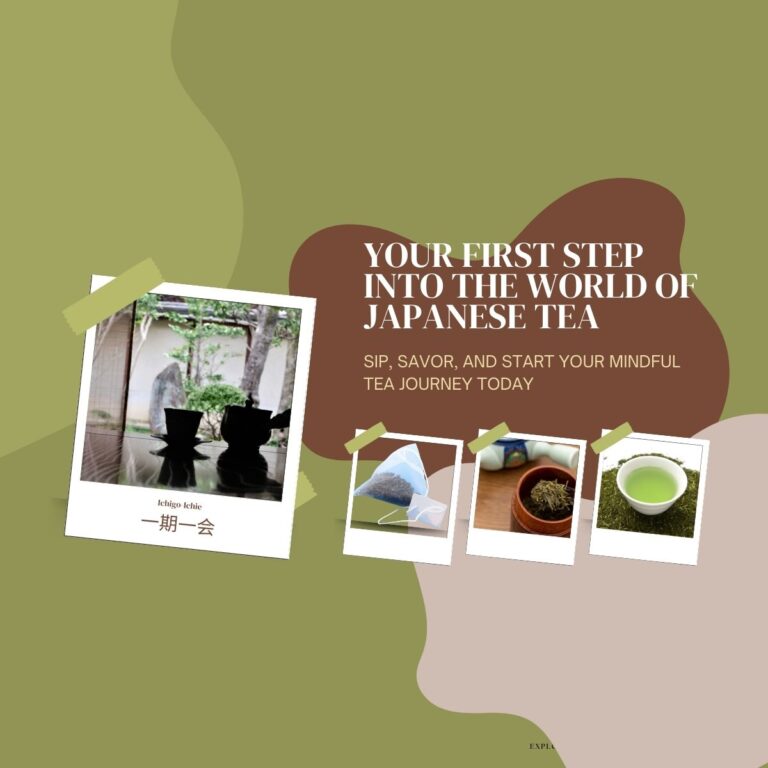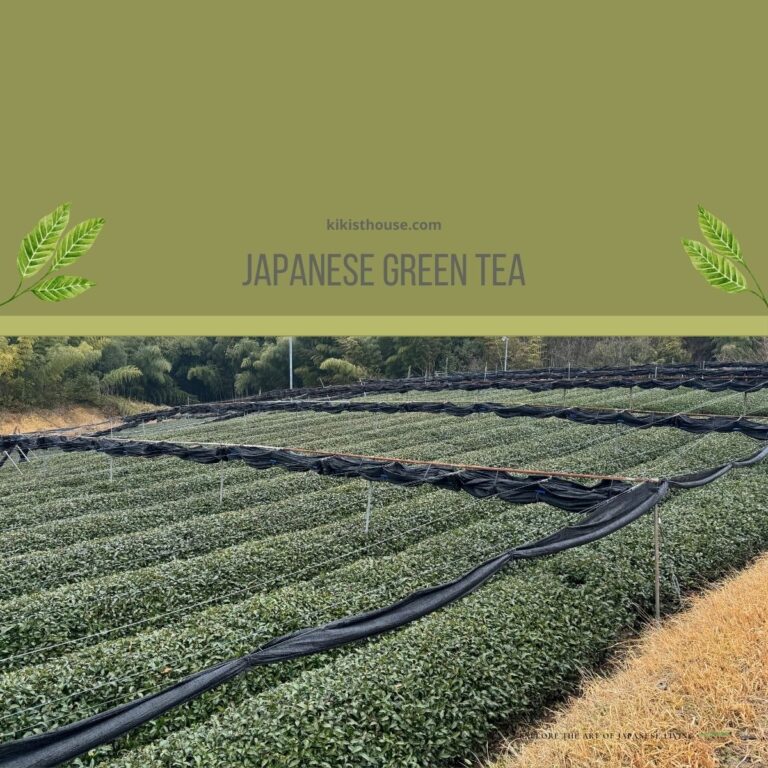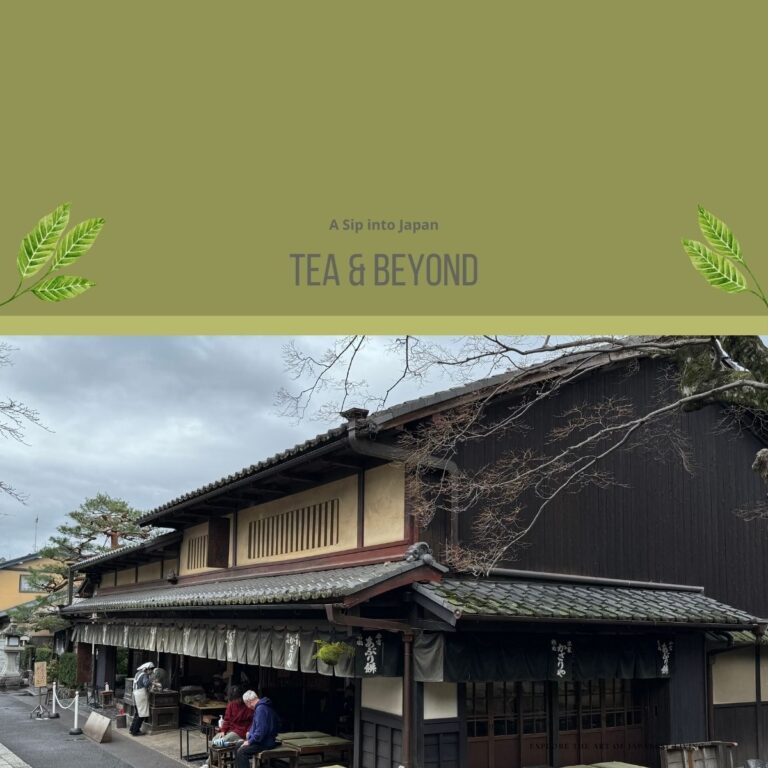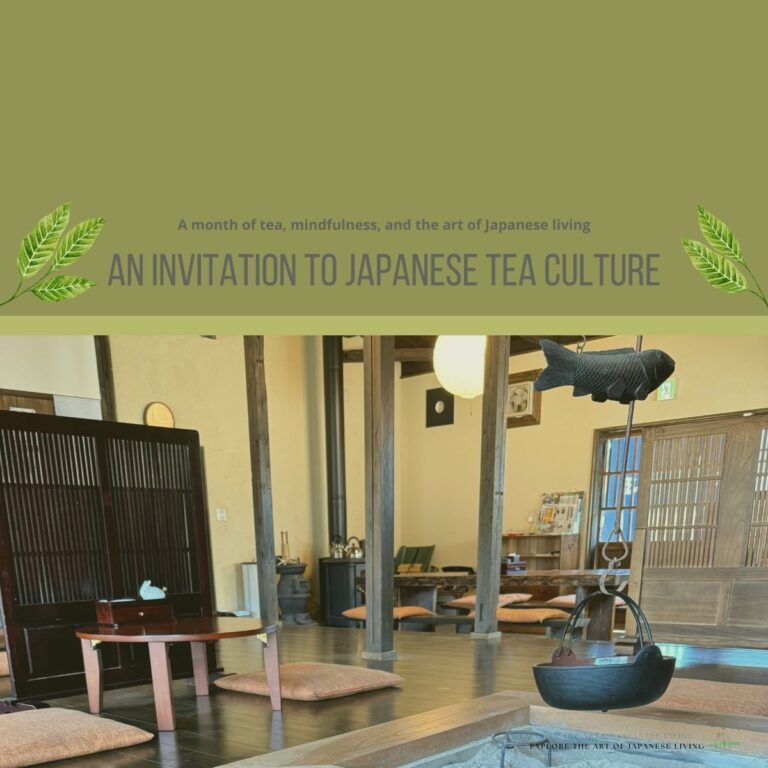Morning to Night: Exploring the World of Japanese Teas | 日本茶の一日
Discover how different Japanese teas can be enjoyed throughout the day—from a refreshing morning Sencha to a calming evening Hojicha.
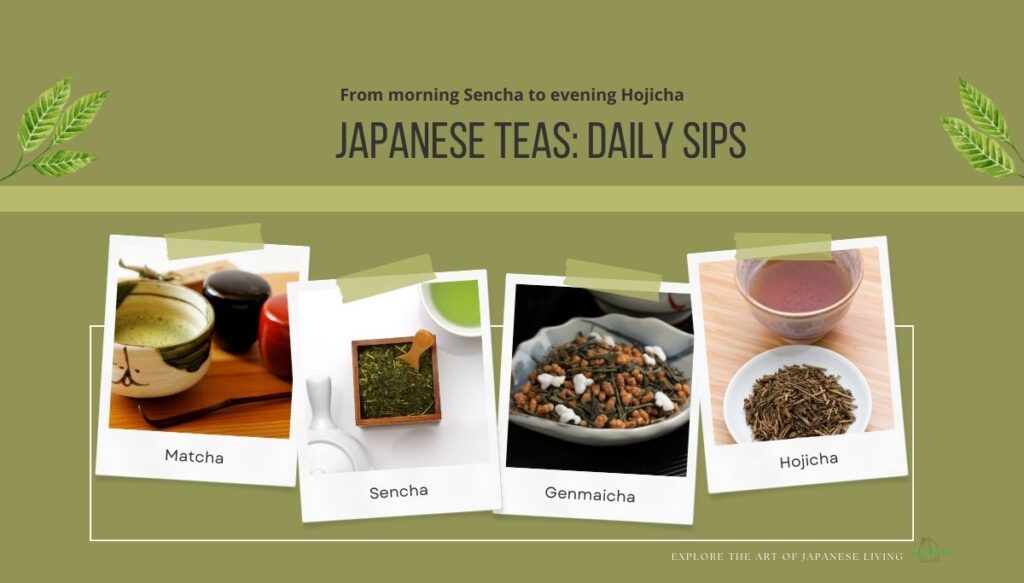
Tea for Every Moment of the Day
Tea is more than just a drink in Japan—it’s a companion throughout the day, offering refreshments in the morning, focus in the afternoon, and relaxation at night. Whether you start your day with a brisk cup of Sencha, take an afternoon Matcha break, or wind down with a toasty Hojicha in the evening, each tea has a unique purpose and experience. But how do these teas differ, and what makes them special? Let’s take a journey through a day in the life of Japanese tea.
Dolce Asks: Why Are There So Many Types of Japanese Tea?
“Why are there so many different types of Japanese tea?” Dolce wonders.
The answer lies in Japan’s deep respect for nature and balance. How a tea leaf is grown, harvested, and processed influences its taste, aroma, and health benefits. Some teas energize, while others soothe. This variety allows people to choose a tea that complements their mood and the time of day.
Foundational Knowledge: The Global Story of Tea
What is Tea?
🍃 All true tea comes from the Camellia sinensis plant, including green, black, white, oolong, and pu-erh teas—each processed differently to create unique flavors.
🍃 Herbal infusions (like chamomile or rooibos) are not true teas but are often enjoyed similarly.
Tea Around the World
- British Tea: Strong black teas like Earl Grey or English Breakfast, often served with milk and sugar.
- Chinese Tea: A diverse range from delicate green teas to aged pu-erh, often prepared with the gongfu brewing method.
- Japanese Tea: A culture emphasizing mindfulness and craftsmanship, with teas like Matcha, Sencha, and Hojicha taking center stage.
✍ Reflection: Write three words that come to mind when you think of tea traditions worldwide
The Uniqueness of Japanese Tea
- Steamed for Freshness: Unlike pan-fired teas, most Japanese teas are steamed, giving them a vibrant green color and umami-rich flavor.
- Shade-Grown Elegance: Matcha and Gyokuro are shaded before harvest, increasing sweetness and amino acids for a smooth, creamy taste.
- Roasting & Fermentation: Japan also offers unique teas like Hojicha (roasted green tea) and fermented varieties like Awabancha and Goishicha.
- Deeply Cultural: From casual everyday sipping to the artful Japanese tea ceremony, tea in Japan is more than a drink—it’s a mindful experience.
Exploring Japanese Tea: More Than Just Green Tea
Morning: Energize with Bright, Bold Flavors
☀️ Matcha (抹茶)– A finely ground green tea packed with antioxidants and a steady caffeine boost for focus and clarity.
☀️ Gyokuro (玉露) – A shade-grown tea with a smooth, umami-rich taste, perfect for a slow morning moment.
Midday: Refresh and Recharge
🌿 Sencha (煎茶)– Japan’s most popular green tea, offering a crisp, grassy flavor and just the right amount of caffeine.
🌿 Genmaicha (玄米茶) – A mix of green tea and roasted rice with a toasty, nutty flavor—gentle on the stomach and refreshing for an afternoon break.
Evening: Unwind and Relax
🌙 Hojicha (ほうじ茶) – Roasted green tea with a warm, caramel-like taste and low caffeine—ideal for winding down.
🌙 Bancha (番茶)– A mild, everyday tea with a smooth, easy-drinking taste, perfect for casual evening sipping.
Beyond the Basics: Regional & Unique Teas
🌿 Awabancha (阿波番茶): A fermented, tangy tea from Tokushima Prefecture with a refreshing, slightly sour taste.
🌿 Goishicha (碁石茶): A rare post-fermented tea from Kochi Prefecture, known for its earthy, tart flavor and distinctive pressed tea blocks.
🌿 Wakocha (Japanese Black Tea – 和紅茶): Japan’s take on black tea, offering a smooth, mild sweetness with floral and fruity notes, often with low astringency.
🌿 Kamairicha (Pan-Fired Green Tea – 釜炒り茶): A pan-roasted green tea from Kyushu with a nutty, slightly smoky flavor, setting it apart from Japan’s steamed green teas.
These regional teas offer unique flavors and traditions, some of which I’m still exploring myself. As I continue my tea journey, I’ll share more insights and tasting experiences along the way!
Finding Your Perfect Tea
With so many choices, how do you find the best Japanese tea for you? Consider these key factors:
- Flavor Preference: Do you enjoy bold, grassy notes (Sencha), smooth umami flavors (Gyokuro), or something mellow and roasted (Hojicha)?
- Caffeine Sensitivity: Need energy? Try Matcha or Gyokuro. Want to relax? Bancha or Hojicha are great choices.
- Occasion & Mood – Are you starting your day with focus (Matcha), taking an afternoon reset (Sencha), or winding down in the evening (Hojicha)?
✍ Take a moment to reflect:
- What flavors do you naturally gravitate toward? Do you prefer the grassy freshness of Sencha, the creamy richness of Matcha, or the roasted warmth of Hojicha?
- Do you prefer a strong caffeine kick or a gentler lift? For a robust energy boost, Matcha or Gyokuro might be ideal. If you’re sensitive to caffeine, consider Hojicha, which is low in caffeine and perfect for evening relaxation.
- When do you usually drink tea—morning, midday, or night? Align your tea choice with your daily routine to enhance your experience.
Once you discover your tea preferences, the next step is pairing it with the right food. 🍽️ But don’t worry—we’ve got you covered!
➡️ Curious about the best foods to pair with your tea? We’ll be exploring that soon—stay tuned!
Dolce & Baku’s Closing Notes: The Essence of Every Sip
🌱 Dolce’s Take: “Each tea has a story. Try something new, and let the flavors transport you!”
😌 Baku’s Reflection: “Tea is more than taste—it’s a pause, a ritual, a moment of presence.”
What tea will you explore next? Let us know in the comments! 🍵
Dolce & Baku’s Weekly Practice: Your Weekly Challenge
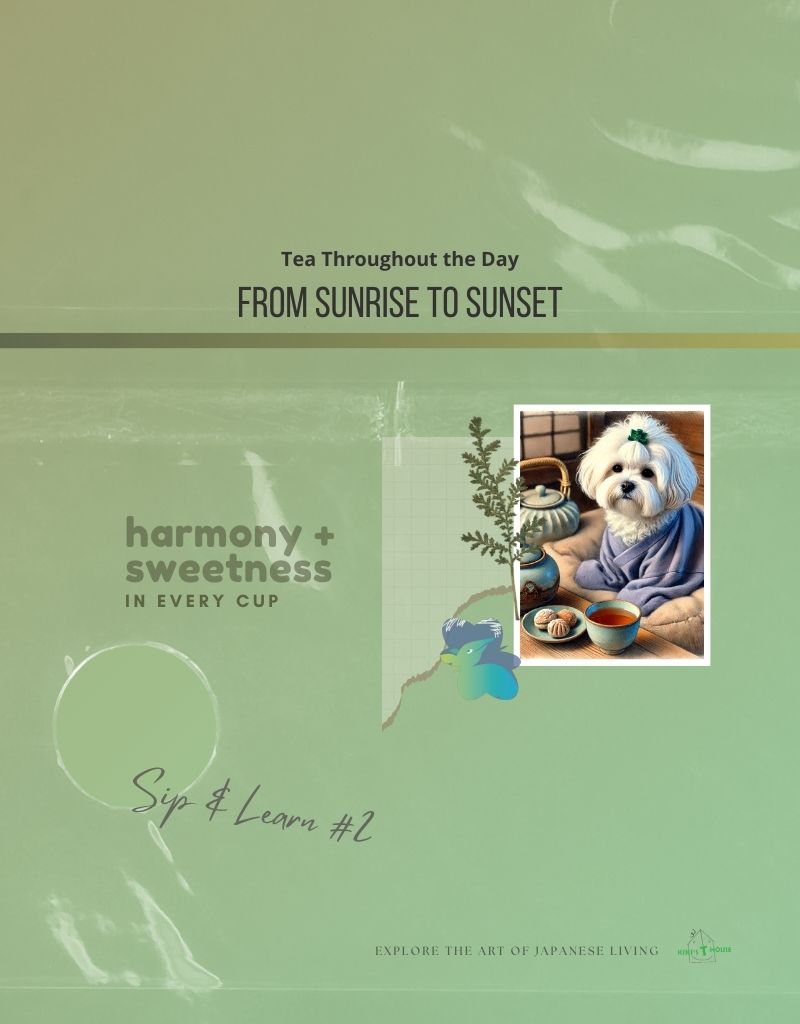
🍵 Dolce’s Challenge: Research the different times of day when Japanese people typically enjoy tea. What types of tea are commonly paired with breakfast, afternoon breaks, or evening relaxation?
🌱 Baku’s Reflection: Set aside time to enjoy a cup of tea in the morning and another in the evening. Pay attention to how each moment feels—does the tea energize or calm you?
✅ Try This:
⬜ Look up traditional Japanese tea-drinking habits.
⬜ Try drinking tea at two different times of the day.
⬜ Reflect on how your body and mind respond to each.
February Blog Series Overview: A Taste of Japanese Tea
As we dive into the world of Japanese tea this February, here’s a quick preview of what’s coming up in the next few weeks:
Week 1 (2/4/25): Shall We Have Tea? – Exploring Japan’s Rich Tea Culture
In this post, we explore Japan’s rich beverage history, from ancient tea traditions to the modern café culture. Whether you’re a seasoned tea drinker or new to the world of Japanese tea, this is a great place to start!
Week 3 (2/18/25): Coffee vs. Tea – A Caffeine Comparison
A common question we all face—coffee or tea? In this post, we’ll compare the caffeine content, health benefits, and mindful effects of Japanese tea vs. coffee. Don’t miss it as we explore the differences and why tea might be your new go-to beverage!
Week 4 (2/25/25): Preparing for Your Tea Journey – A Practical Guide to Starting Your Tea Adventure!
Get ready for an exciting new adventure as we prepare for our upcoming tea class. It’s your chance to take your tea knowledge to the next level!
Coming Next Week: Tea vs. Coffee—Which One is Right for You?
Many people start their day with coffee, but have you ever considered switching to tea? Next week, we’ll compare the caffeine levels, health benefits, and mindful effects of Japanese tea versus coffee.
Join the Conversation: What’s Your Tea Ritual?
Do you have a favorite tea for different times of the day? Have you tried Sencha, Matcha, or Hojicha? Share your thoughts in the comments below!
✨ Stay Connected with Dolce and Baku
Follow Dolce and Baku as they explore the beauty of everyday moments:
📷 Instagram: [@dolce_flys]
📘 Facebook: [@kikisthouse]
📧 Say Hello!: [hello@kikisthouse]
📩 Subscribe to the Newsletter!
Thank you for being part of this journey. Until next time, may your days be filled with calm hearts and warm cup.
Sipping Stories, Steeping Memories, and Sweet Dreams Together
Kiki and Dolce



